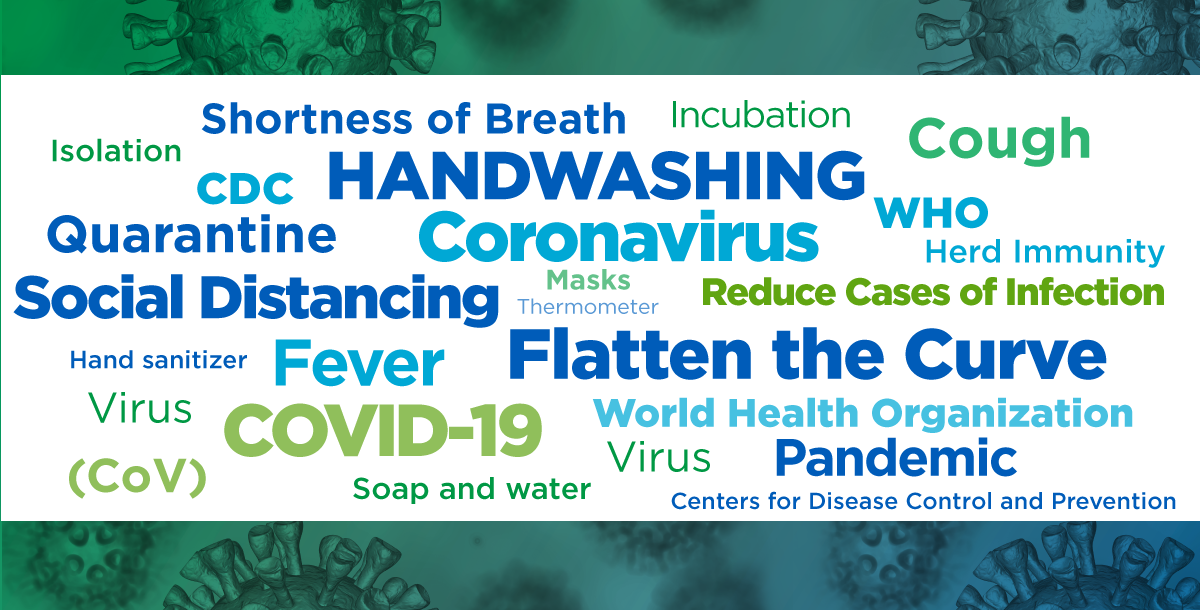The news surrounding COVID-19 is changing rapidly. Additionally, there are many new terms being used to talk about this virus.
To make everything easier to understand, we’ve rounded up some of the most commonly used terms for COVID-19. Let’s get started with the main subject itself.
Coronavirus
According to the World Health Organization, coronaviruses (CoV) are a large family of viruses that cause illnesses ranging from the common cold to more severe diseases. These severe diseases include Middle East respiratory syndrome (MERS-CoV) and severe acute respiratory syndrome (SARS-CoV). Technically, the term “coronavirus” covers more than one type of virus and is not exclusive to the specific strain we are currently dealing with.
COVID-19
COVID-19 stands for coronavirus disease 2019. The World Health Organization tells us that the current coronavirus disease, or COVID-19, is a new strain that was discovered in 2019 and has not been previously identified in humans.
Social Distancing
According to the Centers for Disease Control and Prevention (CDC), social distancing means remaining out of group settings and avoiding mass gatherings. When among other people, maintaining a distance of at least six feet is critical as well. In relation to COVID-19, social distancing is one of the best ways to prevent the spread of the virus to others.
Flatten the Curve
When talking about diseases, the “curve” means the projected number of new infection cases over a certain time period. With COVID-19, the CDC is urging people to practice social distancing in order to reduce the number of those who get sick at one time. Doing this will allow health care systems to have the capacity and tools needed to care for sick individuals who need hospitalization.
In short, “flattening the curve” protects health care systems from being over capacity and allows them to treat everyone who needs care.
Self-quarantine
According to the CDC, quarantine means to separate and restrict the movement of people who were exposed to a contagious disease to see if they become sick. During the COVID-19 outbreak, you should self-quarantine if you were exposed to the virus or you recently interacted with someone who tested positive for the virus. This does not mean you are sick, but that you should monitor your health and stay away from healthy individuals until you aren’t at risk of spreading the virus. The current self-quarantine period for COVID-19 is 14 days.
Isolation
Isolation is separating sick people with a contagious disease from people who are not sick. You should isolate yourself immediately if you believe you are presenting COVID-19 symptoms. This means staying at home and not leaving for any reason. If you live with others, pick a specific space in your home to live in so you aren’t spreading your germs throughout the house. Avoid direct contact with others as well.
Incubation Period
An incubation period is the time between contracting a virus and when symptoms begin to show. For COVID-19, the incubation period is two to 14 days. During the COVID-19 incubation period, you can still spread the virus to others even if you don’t have symptoms yet. This is another reason why social distancing is critical at this time.
Community Spread
The CDC tells us that community spread means people in a certain area or community having been infected with the virus. This includes individuals who are not sure how or where they became infected with the virus.
Herd Immunity
Also known as “community immunity,” this term describes a situation when enough of the population is immune to an infectious disease, making further spread of the disease not likely to happen. Herd immunity can result from vaccination or from enough people contracting the illness and developing their own immunity.
Pandemic
A pandemic is when the number of people with a disease suddenly increases and the disease spreads over several countries or continents. The World Health Organization announced that COVID-19 was officially considered a pandemic on March 11, 2020.
National Emergency
A state of emergency, usually declared by governmental authority, occurs when there is a danger or threat of danger to a nation from foreign or domestic issue.
On March 1, 2020, President Trump officially declared a national emergency concerning the COVID-19 outbreak.
Is there a COVID-19 term you need defined that we didn’t cover above? Comment below with your term. We would be happy to help you.
Stay updated on what Mercy Health is doing related to COVID-19.
Call our 24/7 COVID-19 Hotline at (888) 700-9011 for questions and guidance.





